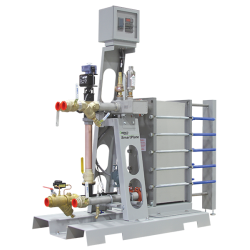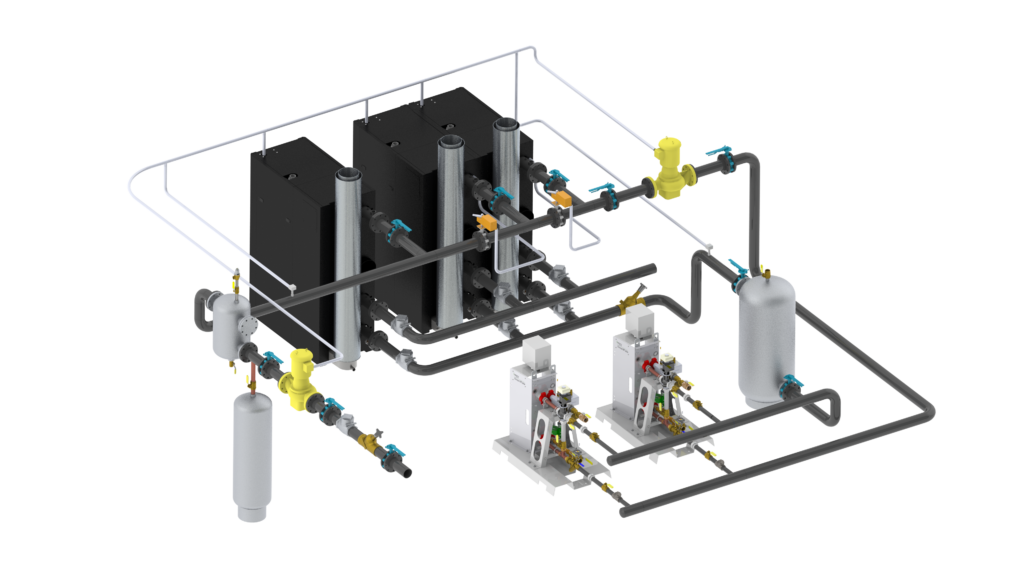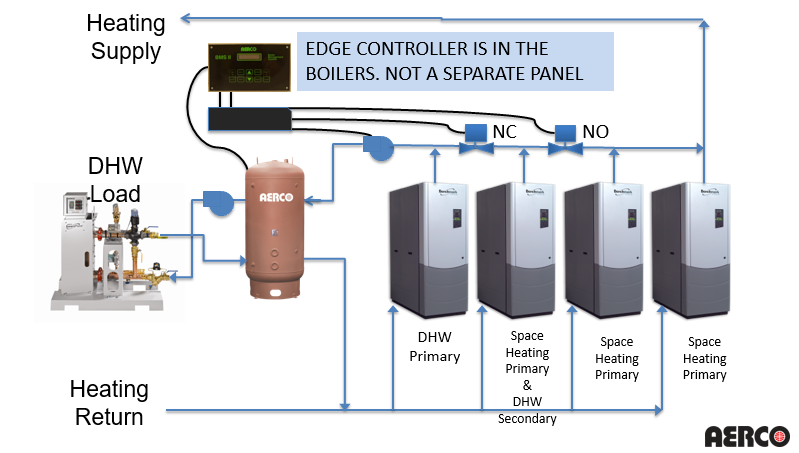 Gas-fired storage type domestic water heaters are the norm in commercial and institutional buildings. Walk into any mechanical room of a larger complex and you will see the large tank and separate heater or a large tank and heater combination. They take space. They take venting. They also take away an opportunity to have your condensing boilers operate more efficiently. Domestic water plate heat exchanger packaged water heaters will save space, venting, and energy.
Gas-fired storage type domestic water heaters are the norm in commercial and institutional buildings. Walk into any mechanical room of a larger complex and you will see the large tank and separate heater or a large tank and heater combination. They take space. They take venting. They also take away an opportunity to have your condensing boilers operate more efficiently. Domestic water plate heat exchanger packaged water heaters will save space, venting, and energy.
What are SmartPlate Tankless Water Heaters?
Many institutional buildings have Bell & Gossett SU heat exchangers which convert steam energy to hydronic heating water in a small space. We are also familiar with plate heat exchangers that are used for free cooling in chilled water applications. The “SmartPlate” is a plate style heat exchanger with a number of temperature and safety controls which will use boiler water to heat domestic water. SmartPlate is a brand manufactured by Aerco. I wrote a number of articles on tankless water heaters if you need more information.
How Can SmartPlate Tankless Water Heaters Save More Money with Dual Return Condensing Boilers?
When you use dual return boilers, you can enjoy greater energy savings. By keeping some low-temperature returns separate from the normal hydronic returns, we can have the entire boiler plant operating 2-6% more efficiently. The link above will walk you through the story and show the math involved.
The actual design of the system is too complicated for a blog. There are CAD drawings and details available by calling your R. L. Deppmann sales engineer for assistance. If you are planning to use this great, cutting edge engineering opportunity, here are a few points to discuss.
Seven Design Points to Consider When Applying SmartPlate Technology
- The total load of boilers and water heaters will be less than the sum of the separate components. There is a diversity factor applied. The manufacturer has an application we can use to help you determine the combined load required.
- The domestic water side has continuous circulation and may not need a storage tank which saves space and legionella concerns. The heating side may require a buffer tank to prevent short-cycling in the summer. This tank will be smaller than the traditional plumbing side tank and may take the place of, or replace the air separator.
- If the heating pump variable speed control head is less than the SmartPlate pressure drop, a separate pump may be required.
- If the reset controls for the heating system will drive the supply temperature to within 10°F of the domestic hot water supply temperature, a dual operating system, as shown above, will serve you well. The SmartPlate must be sized on the lowest expected supply temperature.
- Any standby water heater or boiler can be combined for the dual purpose of supporting both systems. Your (N+1) plus (N+1) design becomes (N+N+1). You save space and your client’s money.
- The use of the plate heat exchanger gives an advantage in systems where dual fuel is required. The Aerco Benchmark Platinum can use both gas and, as a standby fuel, propane. When coupled with SmartPlate, you have a dual fuel system for the domestic water also!
- The plate heat exchangers for domestic water can be rated for higher pressures which makes them ideal for high rise design applications.
These systems have plug and play controls which make them easy to engineer and describe in the project documents. Keep the “Domestic Water Plate Heat Exchangers and Dual Return Condensing Boilers” in your toolbox and use this tool often in larger systems.



